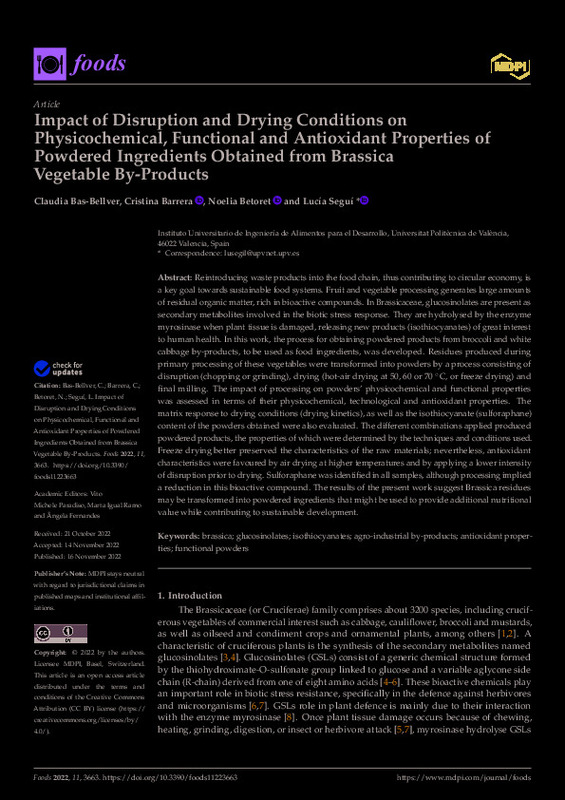JavaScript is disabled for your browser. Some features of this site may not work without it.
Buscar en RiuNet
Listar
Mi cuenta
Estadísticas
Ayuda RiuNet
Admin. UPV
Impact of Disruption and Drying Conditions on Physicochemical, Functional and Antioxidant Properties of Powdered Ingredients Obtained from Brassica Vegetable By-Products
Mostrar el registro completo del ítem
Bas-Bellver, C.; Barrera Puigdollers, C.; Betoret Valls, N.; Seguí Gil, L. (2022). Impact of Disruption and Drying Conditions on Physicochemical, Functional and Antioxidant Properties of Powdered Ingredients Obtained from Brassica Vegetable By-Products. Foods. 11(22):1-19. https://doi.org/10.3390/foods11223663
Por favor, use este identificador para citar o enlazar este ítem: http://hdl.handle.net/10251/193628
Ficheros en el ítem
Metadatos del ítem
| Título: | Impact of Disruption and Drying Conditions on Physicochemical, Functional and Antioxidant Properties of Powdered Ingredients Obtained from Brassica Vegetable By-Products | |
| Autor: | Bas-Bellver, Claudia | |
| Entidad UPV: |
|
|
| Fecha difusión: |
|
|
| Resumen: |
[EN] Reintroducing waste products into the food chain, thus contributing to circular economy, is a key goal towards sustainable food systems. Fruit and vegetable processing generates large amounts of residual organic matter, ...[+]
|
|
| Palabras clave: |
|
|
| Derechos de uso: | Reconocimiento (by) | |
| Fuente: |
|
|
| DOI: |
|
|
| Editorial: |
|
|
| Versión del editor: | https://doi.org/10.3390/foods11223663 | |
| Coste APC: |
|
|
| Código del Proyecto: |
|
|
| Agradecimientos: |
This research was funded by the regional government of Valencia (Generalitat Valenciana) under the Rural Development Program 2014-2020 (Ayudas para la cooperacion en el marco del Programa de desarrollo rural de la Comunitat ...[+]
|
|
| Tipo: |
|









